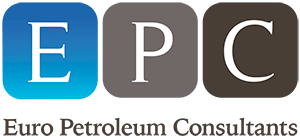Refining & Petrochemicals Integration Opportunities for a Sustainable Downstream Business in today’s Changing Environment
In the last decade, the Downstream sector has experienced a number of different challenges from volatile crude prices with the highs of 2011 to the lows of 2016, the increased focus on climate change, to the continuing need for Cleaner transportation fuels and the recent introduction of more stringent specifications for Bunker fuels with the IMO Marpol VI regulation. The industry has had to adapt to all types of scenarios and companies have had to adjust their strategic plans accordingly . Today has brought an additional factor – the impact of the Covid-19 pandemic has been wide reaching with the ever-growing pressure to improve our environment, the challenges will be even more demanding. We can safely say that there will be an ‘after Covid-19’ scenario and we will see how the downstream companies will adjust their Business model as a result.
How will our industry need to evolve to meet these challenges? What major changes will be required to make a success of this transition? It will be important to evaluate how crude oil can be converted into cleaner products and how to optimise integration with petrochemicals production. Diversification will be a major factor. This evolution will also encompass creating sustainable plastic solutions and lightweight materials for transport, notably shipping, aviation and electric vehicles (EVs).
Looking ahead, oil companies will need to accelerate efforts to meet their downstream ambitions for a sustainable and successful future. Focus on integration, digitalisation, talent and environment, will be necessary.
If we now turn our attention to focus on the different options and opportunities for fefining and petrochemical integration – we have seen that the downstream industry is putting greater emphasis on increased refining and petrochemical integration; from petchem oriented FCC’s right through to the advent of ambitious crude-oil-to-chemical projects (COTC).
If we look at the concept of the refinery and petrochemical plants of the future – there are a number of key questions that need to be asked. What will these plants look like? With the implementation of smart operation and connected plants, the investment in artificial intelligence – technology providers are introducing new solutions to help assets improve in terms of efficiency and flexibility.
Companies such as Honeywell have unveiled a new ‘Refinery of the Future’ concept, which demonstrates how carefully planned investments in refining operations, including integration with petrochemicals production, can help companies significantly improve profit margins and adapt to the evolving landscape.
It is clear to all that the oil refining and petrochemical industries have been experiencing interesting but also challenging times – this has in the past been mainly due to both to political and economic reasons. Today we also need to take into account an additional disruptor – the Covid-19 pandemic. We have already seen a number of reports in the media about the major impact that the pandemic has had on industries across the board. The O&G industry is no exception - with falling crude oil prices, major acquisitions deals being restructured, dropping company market values – and not forgetting the impact on an important number of projects – many of which have been delayed or simply cancelled.
Before the Covid-19 pandemic among the risk factors for oil refining was the projected slowdown in the growth rate of fuel consumption against the backdrop of increased use of electric vehicles. Covid-19 has accentuated this slowdown and it will be very interesting to see the lasting impact on future transportation models post Covid-19.
In certain regions the demand for chemical and petrochemical products is expected to remain relatively high, driven by rising living standards in countries such as China and India. In this regard, solutions that enhance the integration between oil refining and petrochemicals are and will continue to be important.
Integration projects are wide ranging offering many possibilities and configurations. We have seen a number of emerging trends – the reduction of heavy fuel oil production with a Residue FCC Unit for maximum Propylene production - such options are offered by the major licensors of the FCC technology such as KBR, Honeywell UOP and Axens. Specific catalyst formulations are available for such operations. Axens are licensing their High Severity RFCC technology – fruit of a collaboration between Saudi Aramco, JX Nippon Oil & Energy Corp.(JX), King Fahd University of Petroleum & Minerals, Technip Stone & Webster Process Technology and Axens Solutions. The first commercial application of this technology was successfully completed at the S-Oil refinery in Onsan, South Korea.
Another means for capturing value via residue to chemicals project – is using Ebullating Bed Residue Hydrocracking technology unit (such as H-OIL and LC-Fining licensed by Axens and CLG respectively) integrated with a petrochemical complex by upgrading the heavy by-products of steam cracker units.
Optimisation of Aromatics production is also a good opportunity to integrate refineries with petrochemical complexes by recycling pyrolysis gasoline from a steam cracker to the Aromatics Complex.
The Middle East is making real advances to develop a more diversified and greener economy. There are different green oil strategies to help companies improve their carbon footprint – this can be through diversification into natural gas and renewable energy. Before the pandemic we were seeing increased activity in projects being developed or evaluated in other regions such as China, SE Asia, Russia and CIS Countries – specifically for conversion of natural gas to Methanol and then Methanol to Olefins using MTO and MTP technologies such as those licensed by Honeywell UOP and Air Liquide.
It will be important for the industry to continue to invest, despite the obstacles, in order to cope with changing regulations, invest in flexibility to adapt to Regional and Global markets and in integration, as well as to build-in operational excellence, reliability and maintainability into all stages of capital projects and asset lifecycle. Many of these projects need large investments hence it is essential to understand impact of Covid-19, the changing markets in each region before embarking on these capital intensive projects.
The Middle East region has demonstrated the benefits of JV’s and partnerships as a model to remaining competitive in today’s market by attracting foreign investment and expertise, trading by oil and petrochemicals companies. This allows to create new revenue streams and also to diversify the downstream business. Companies such as Total, Dow and ExxonMobil JV experiences with local oil companies have demonstrated the benefits of such partnerships in the Middle East.
This trend was expected to continue and grow. This however was before the global pandemic - we have already heard how certain deals have been put on-hold, or are being renegotiated – it will be very interesting to see how the industry evolves post Covid-19. For certain Refining & Petrochemical integration will remain an important part of the jigsaw puzzle.
 Euro Petroleum Consultants is a technical oil and gas consultancy with offices in Dubai, London, Moscow, Sofia and Kuala Lumpur. Euro Petroleum Consultants also organises leading conferences worldwide.
Euro Petroleum Consultants is a technical oil and gas consultancy with offices in Dubai, London, Moscow, Sofia and Kuala Lumpur. Euro Petroleum Consultants also organises leading conferences worldwide.
Published by:

